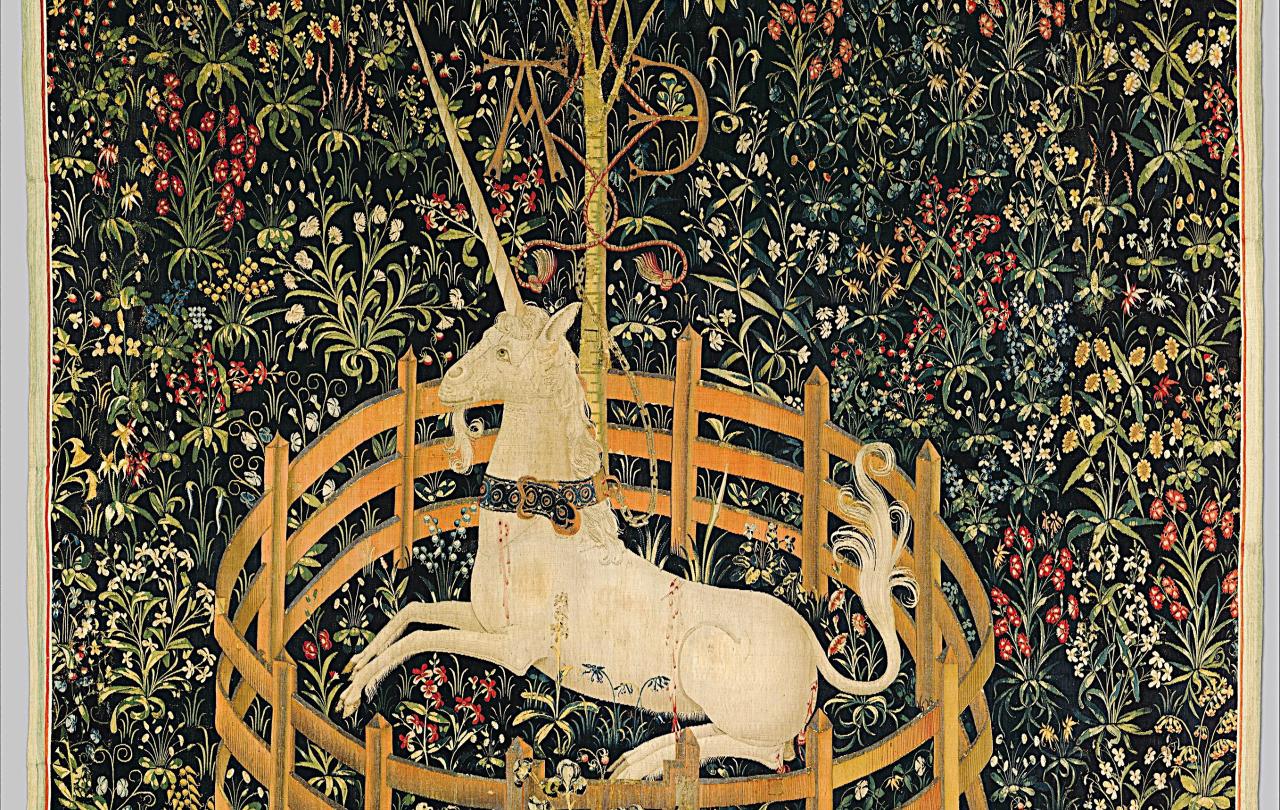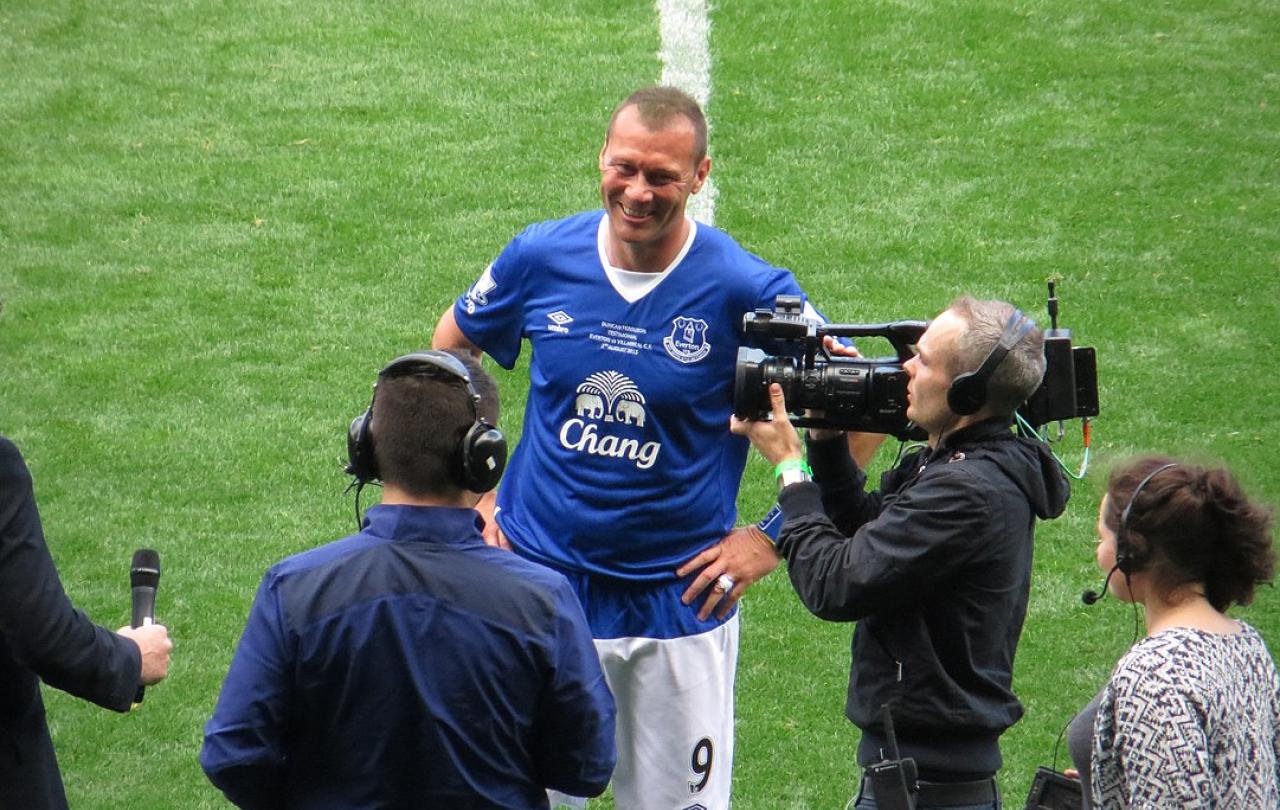
I don’t do horror or gore. And yet, I just saw the gory creature feature comedy horror Death of a Unicorn. I have not seen such a clichéd movie in a very long time (probably since Don’t Look Up…). Death of a Unicorn gives us a strained father-daughter relationship, the artsy young girl with silver rings on every finger and dyed hair, cartoonishly evil rich people, their creepy but stupid blonde son, the put-upon butler… and… the unicorn. However, the biggest cliché of them all is perhaps the desperate attempt to subvert expectations and tell a new story about a familiar trope… and failing.
Given the title of the film, one would be forgiven for assuming that unicorns play a significant role in it. One would be mistaken. The conceit of killer-unicorn is a fun one. I wish the film had played with it more. Instead, the unicorns themselves barely feature and are not particularly interesting or subversive. The perception of the unicorn that is put forward by the characters likewise is trite and tired.
The film features another classic scene: the ‘plucky young woman digs out her laptop and falls down a google rabbit hole to research paranormal/fantastical phenomenon’. In her research Ridley comes across a set of medieval tapestries depicting a unicorn hunt. These tapestries do exist in real life and are indeed now housed at The Met. The Met’s fictional website in the film informs Ridley that the fifth tapestry in the series ‘The Unicorn Surrenders to a Maiden’ only survives in fragments (true) and that scholars believe the missing part of the tapestry most likely showed the unicorn going on a murderous rampage (very much not true). From this, Ridley deduces that, since unicorns do indeed appear to be real, the warnings of old ought to be heeded. In the film, Ridley is proved right, the unicorns do turn out to be murderous monsters out for the blood of those who would abuse the remains of their dead foal.
While the real Met website does indeed show us the torn tapestry, it features no such conjecture about the gory violence the unicorn might have inflicted prior to being subdued by the maiden.
In one of her desperate attempts to reason with the megalomaniacal pharmaceutical tycoons, Ridley slips in a sentence about the unicorn serving as an allegory for Christ. This is a claim that is repeated all across the internet in various fora, fan sites, even some old scholarship. But that is exactly what this theory is: outdated scholarship… mixed with a healthy (unhealthy?) dose of paternalistic attitudes towards the past and half-misremembered folklore about Christian symbolism. It is true that medieval art is rich in symbolism. It is also true that medieval European cultures were deeply steeped in Christian religious traditions. However, as Barbara Drake Boehm writes in her recent book on the tapestries ‘the Cloisters Hunt for the Unicorn tapestries have … fallen victim to a tendency to perceive Christianity in every stitch’. The fact that one of the hunters has a scabbard that invokes the ‘Queen of Heaven’ (the Virgin Mary), or that another carries rosary beads, are most likely simply indicative of the fact these were common items ‘within the majority-Christian society in which the tapestries were created’. (A Blessing of Unicorns, The Metropolitan Museum of Art, 2020).
This contrived and at the same time lazy interpretation speaks of a deeply patronising and arrogant attitude to the past.
One doesn’t need a degree in art history to figure out that such an allegorical relation would make no sense either. If the unicorn was representative of Christ and the hunt of his Passion, why does the unicorn fight back? If the untouched maiden in whose lap the unicorn reposes is the Virgin Mary, mother of Christ, why does she help the hunters trap and kill the unicorn? The tapestry that supposedly shows the unicorn resurrected and at peace in its captivity does not even appear to belong to the same narrative as the other tapestries. And why would a resurrected Christ-figure be shown in supposed captivity?
This contrived and at the same time lazy interpretation speaks of a deeply patronising and arrogant attitude to the past. ‘Ah, well, back then they were all religious fanatics that believed in silly things like Jesus and unicorns.’ The implication being that in our modern, enlightened state we couldn’t possibly be accused of believing in silly simplistic mythical accounts of the world… Yeah. Not only is this of course false, it also distract from the very real things we could learn from the past.
The film in the end wants to have it both ways. It wants to ridicule medieval people (based on lazy stereotypes) as well as perpetuating some of the most backward attitudes woven into the tapestries. So, what is the real true meaning of the tapestries and of unicorns? I don’t know. I can’t offer ‘real true’ interpretations (because they don’t exist). What I can offer is a careful and close engagement.
What strikes me about the myth of the unicorn is what the unicorn does stand for. Over the centuries the unicorn has been used as a symbol for purity, innocence, humility, and sometimes fertility. In medieval poetry the (male) bard would often cast himself as the unicorn, beguiled by his beautiful lady, desiring nothing more than to rest his head in her lap. Little of this particular metaphor has survived into the modern pop-culture. What seems to have survived is the strong connection with young virgins. This particular trope features heavily in the film too though the film makers attempt to gloss over the sexual implications of ‘virgin’ by speaking only of ‘maidens’ (which still means the same thing but doesn’t have the same sexual baggage for modern ears).
Now, that is indeed an interesting aspect worth unpacking. Why is it that unicorns are so attracted to young women who have not had sex? Why the obsession with virginity and the implied association that – for a woman! – having sex sullies something pure? What does it mean that both the hunters in the tapestries and the rich people in the film use a woman’s body and sexuality to trap the unicorn and commit their violence? Where’s the film that deals with those questions? Until they make that one maybe I’ll stick with My Little Pony, I’m told that has significantly less disembowelment.
Celebrate our 2nd birthday!
Since March 2023, our readers have enjoyed over 1,000 articles. All for free. This is made possible through the generosity of our amazing community of supporters.
If you enjoy Seen & Unseen, would you consider making a gift towards our work?
Do so by joining Behind The Seen. Alongside other benefits, you’ll receive an extra fortnightly email from me sharing my reading and reflections on the ideas that are shaping our times.
Graham Tomlin
Editor-in-Chief





